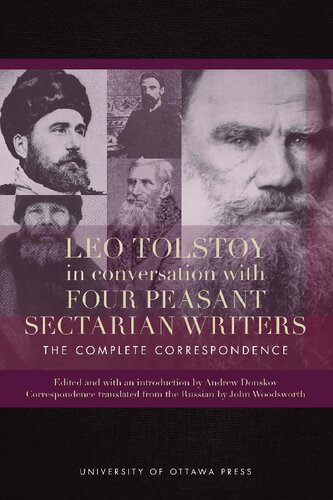

Most ebook files are in PDF format, so you can easily read them using various software such as Foxit Reader or directly on the Google Chrome browser.
Some ebook files are released by publishers in other formats such as .awz, .mobi, .epub, .fb2, etc. You may need to install specific software to read these formats on mobile/PC, such as Calibre.
Please read the tutorial at this link: https://ebookbell.com/faq
We offer FREE conversion to the popular formats you request; however, this may take some time. Therefore, right after payment, please email us, and we will try to provide the service as quickly as possible.
For some exceptional file formats or broken links (if any), please refrain from opening any disputes. Instead, email us first, and we will try to assist within a maximum of 6 hours.
EbookBell Team

0.0
0 reviewsThe theme of the peasantry is central throughout most of Tolstoy’s long career. His obsession with this class is seen not just as a matter of social or humanitarian concern, but as a response to the questions of “how to live a good life” and “what is the meaning of life that an inevitable death will not destroy?” questions that plagued his entire life.
The letters he exchanged with the four major peasant sectarian writers (Bondarev, Zheltov, Verigin, and Novikov) reveal not only Tolstoy as a profound thinker, but his correspondents also, as they converse on subjects concerning religious-moral questions, the meaning of life and how one should strive to find it, along with a wide array of burning social and personal problems. An analysis, and a consecutive reading of the letters (provided with extensive annotations) as a unified whole, elucidates the progressive development of the ideas they held in common (and where these diverged) and which guided Tolstoy’s and his correspondents’ lives.
The juxtaposition of Tolstoy’s letters with those of his four sectarian correspondents makes them even more significant by showing them in their original context of a dialogue, or conversation. Also, with the aim to present the conversation in an even broader context, Andrew Donskov briefly discusses Tolstoy’s relationship with peasants in general as well as with each of the four individual writers in particular. In addition, he has provided a background sketch of two major religious groups, namely the Doukhobors and Molokans, both of which still claim sizeable populations of followers in North America today.
Originally published in 2008 by the Slavic Research Group at the University of Ottawa under the title Leo Tolstoy and Russian peasant sectarian writers: Selected correspondence, the expanded University of Ottawa Press edition includes 44 new letters never published in English, out of the total 155 letters.